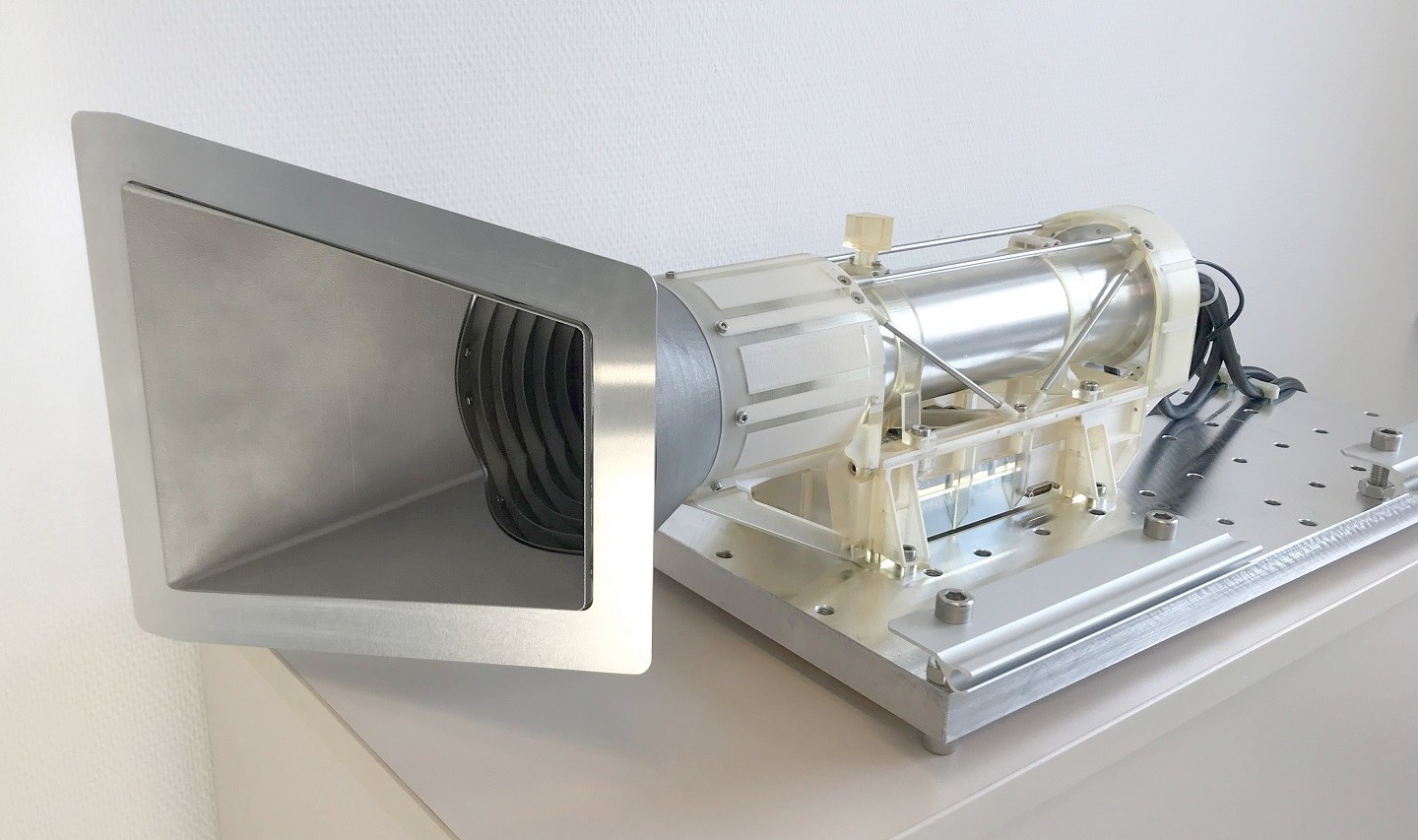VEM / VERITAS Mission
The spectrometer VEM on VERITAS
The Venus Emissivity Mapper (VEM) is the first flight instrument designed to focus on mapping the surface of Venus using several atmospheric windows around 1 µm. Its main objective is achieving an instrument SNR of well above 1000, as well as predicted error in retrieval of relative emissivity of better than 1%, assuming the availability of improved Venus topography.
VEM is one of the two core scientific instruments on VERITAS, a NASA mission to observe Venus. The VEM development is led by two DLR institutes in Berlin, the Institute of Planetary Research (PF) and the Institute of Optical Sensor Systems (OS). PF focuses on the scientific definition and implementation, validation and operation, OS focuses on designing, manufacturing, assembly and verification of the instrument. A French contribution, the optics including spectral filter assembly, is provided by the Centre National d'Etudes Spatiales (CNES) and the Laboratoire d'études spatiales et d'instrumentation en astrophysique (LESIA).
In June 2021 NASA has selected two missions (VERITAS and DAVINCI+) to Venus, the Earth’s nearest planetary neighbor. Part of NASA’s Discovery Program 2019, the missions aim to understand how Venus became an inferno-like world when it has so many other characteristics similar to ours – and may have been the first habitable world in the solar system, complete with an ocean and Earthlike climate. Suzanne Smrekar of NASA’s Jet Propulsion Laboratory in Southern California is the principal investigator. JPL provides project management for the mission, the German Aerospace Center the infrared mapper VEM, the Italian Space Agency (ISA) and France’s Centre National d'Etudes Spatiales (CNES) contributing to the radar and other parts of the mission. The launch of VERITAS is planned in 2027.



